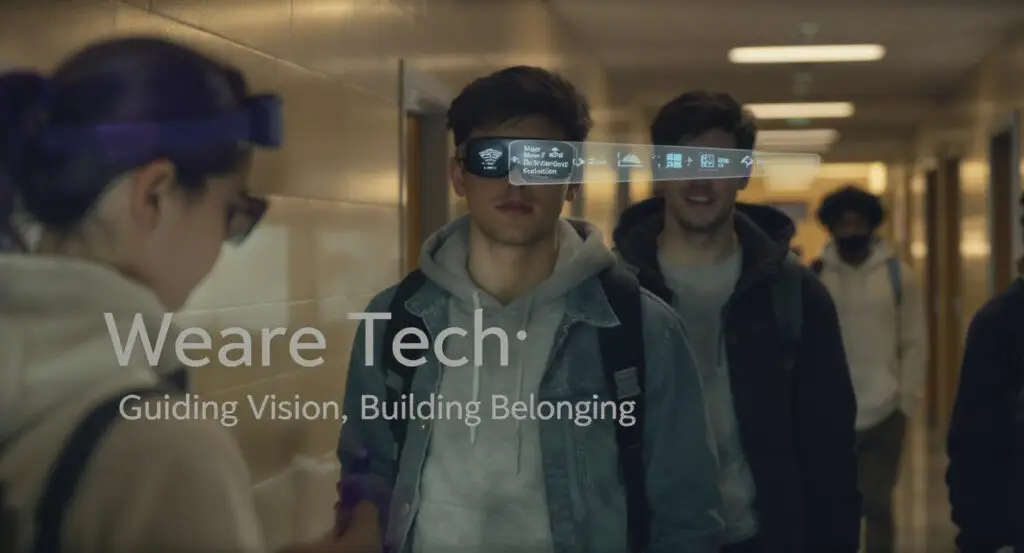For students living with central vision loss, the challenges of school go far beyond blurry text or a missed chalkboard note. From lagging behind in reading assignments to misinterpreting facial expressions in social settings, the impact of this condition can be both academically and emotionally isolating. But thanks to advancements in wearable technology, new tools are helping these students reclaim their confidence and participation in the classroom.
At the forefront of this innovation is eSight Go, a high-tech pair of smart glasses developed by Gentex Corporation’s eSight. This device uses a high-speed, high-definition camera to continuously capture the user’s field of view, which is then processed through algorithms and displayed on dual HD OLED screens. The real-time footage enhances and fills in gaps in the user’s central vision, allowing them to see more clearly and engage more fully in their learning environments.
Central Vision Loss: A Hidden Barrier in the Classroom
Central vision loss specifically impairs the ability to see what is directly in front of the eyes, while peripheral vision remains unaffected. This makes tasks like reading, writing, recognising faces, or watching a lesson from the board particularly difficult. Without adequate support, students can fall behind academically, take longer to complete work, or miss visual cues essential for understanding lessons.
These struggles often extend beyond academics. Students may be wrongly perceived as disengaged or antisocial simply because they can’t recognise peers or participate in games and group activities. Over time, this can lead to social isolation, diminished self-esteem, and increased reliance on adults or peers.
The Power of Real-Time Vision Enhancement
Wearable tech like eSight Go is transforming this landscape. According to Roland Mattern, director of sales and marketing at eSight, the glasses help restore critical visual functions that allow students to engage fully in classroom life.
“The ability to have central perception brought back into your set of tools for education is critically important,” Mattern said. “Ease of reading, ease of seeing the board, using tablets or computers all of these things [lead to] the ability to complete an academic task with greater ease.”
A standout feature of the device is Freeze Frame, which enables users to capture an image, be it a whiteboard, textbook page, or graph, and magnify it for closer study. This allows students to process information at their own pace without falling behind.
“This eases the ability to absorb information and move on, at a regular pace, with the rest of the class,” Mattern added.
More Than Just Vision: Supporting Social Connection
Beyond academics, central vision loss can severely affect a student’s social experience. Recognising facial expressions, making eye contact, and identifying classmates in a crowd are essential elements of daily school life elements that are often compromised by visual impairment.
“There’s a huge social aspect to education as well; seeing expressions on teachers’ and fellow students’ faces is a major part of communication,” Mattern noted.
The glasses not only help restore those missing visual cues but also support students in navigating a world where digital communication is the norm.
“Think of how much peer-to-peer communication is digital now, and if you have central vision loss, you can’t see your phone or screen,” he said. “The educational part is not just academic; it’s about the student experience that you want to enhance and optimise.”
A Shared Responsibility: Empowering Through Awareness
While technology plays a pivotal role, educators, families, and classmates remain central to building inclusive and supportive learning environments. Teachers can create opportunities for awareness and empathy, helping classmates understand the realities of visual impairment and fostering a culture of inclusion.
“If we can make daily living, hobbies, and education easier and facilitate participation, that’s a win for everybody,” Mattern emphasised.
With the support of groundbreaking tools like eSight Go and a community that understands and uplifts them, students with central vision loss are finding new clarity not only in what they see but in how they learn, connect, and thrive.























